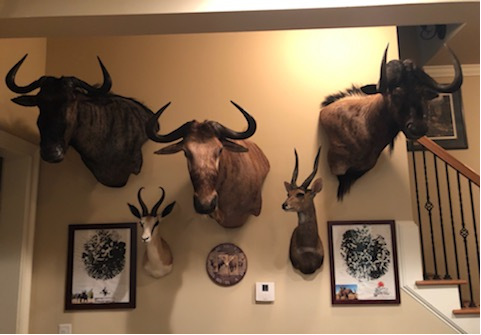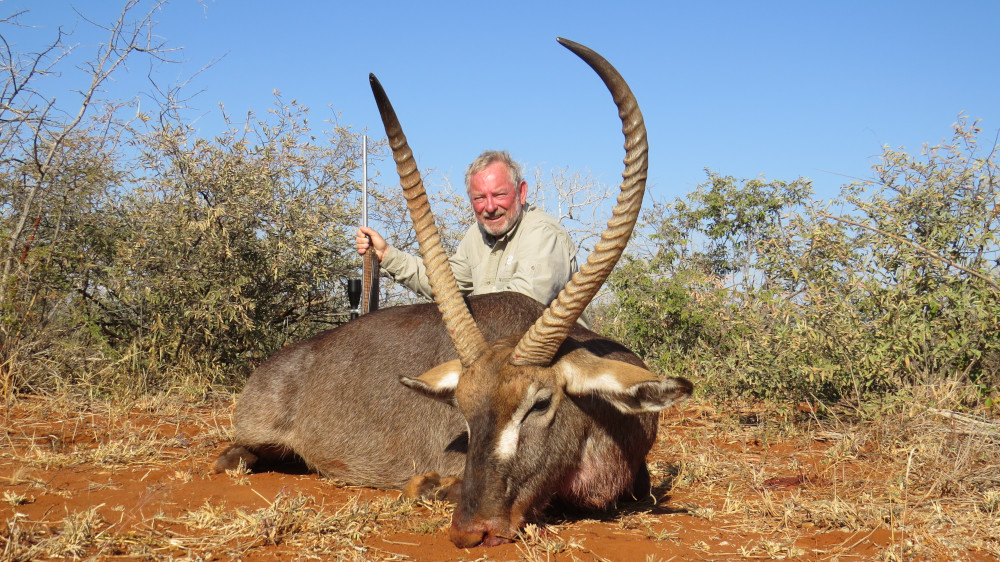Hunter Profile of a loyal supporter – Chuck Shellhouse
I am 75 years old and have been enjoying the outdoors my entire life. I grew up on a farm in Ohio and began hunting pheasants and whitetail deer. After college I lived out west in Arizona and Colorado and got hooked on mule deer and elk. I have hunted both in Arizona, Colorado, Wyoming, Idaho and even Canada and have taken more than a dozen bull elk.
On a quail hunt in Arizona, my hunting buddy and I got stranded on the wrong side of a river due to a massive flash flood on Christmas Eve. You can image the scolding I got from my wife on that trip.
On one of my hunting adventures to Idaho in our quest for elk, my hunting partner and I ended upside down in a creek after the steering went out on a rented van we were driving in. Fortunately no one was hurt, other than the van and we both got very nice Elk on that trip.
My best hunting buddy and I began our quest to Alaska searching for the next challenge. I once got stranded on a mountain top in Alaska and spent three days hunkered down in a two-man tent due to torrential rain and high winds. Once the storm past, I was able to harvest a monster moose and two large Caribou. Later hunts resulted in more moose, caribou, brown bear and wolf, along with some excellent fishing. Another heavy rainstorm stranded us on a riverbank for several days along with the Super Cub and Pilot.



After several trips to the SCI shows in Reno and Las Vegas, we were bitten by the Safari bug. I have been on three safaris to South Africa and once to Namibia. My hunting buddy, Charlie Emde, and I focused on plains game on these trips. I have been very fortunate to take 19 different species of plains game with all of them making the SCI record book. On one trip, my PH and I were tracking a wounded red hartebeest late into the evening. Following the blood trail through the thick brush lead us face to face with a Leopard no more than a few yards away. He apparently had the scent of the hartebeest and was tracking it as well. My PH told me to take the safety off my rifle and be prepared to shoot if need be. He also had this rifle trained on the big cat. Smarter minds told us to back out and come back the next morning and pick up the trail. My PH told me that we would only find the head if the leopard had made the final kill. Fortunately, we were able to pick up a trail and I made a final shot on a gold medal red hartebeest, but I’ll never forget that stare from the Leopard.
On another hunt in Namibia, I dropped a huge eland with my .375 at 300+ yards. When we made it to the spot where the eland had fallen, all we found was a pool of blood. Once again on this hunt it got took dark for us to safely track this animal. The PH then said we would find it the morning as long as the jackals or hyenas didn’t get there first. I am always amazed at the skills of the African trackers as the found this eland after it gone over a mile from where I had shot it. I was very lucky as the only damage was some birds at pecked out one of the eyes on my gold medal eland.



The hardest animal for me to get in Africa was the bushbuck. It took three safaris and 10 years for me to finally harvest a nice Limpopo bushbuck with 15″+ horns.
I hope to return to Africa as soon as my health will allow. Still recovering from the impact of Stage 4 cancer in my head/neck area and recently diagnosed with prostate cancer. Chemotherapy, Radiation and lots of physical therapy along with my strong faith in God will get me there. I hope to go after Cape buffalo and roan in the future. If anyone is looking for a great PH, look up Marco Du Plessis with Afrika Barrel and Bow Safaris who is located near Sterkriver in the northern part of the Limpopo Province of South Africa.
I once hunted Bison on an Indian Reservation is South Dakota, where the temperature was -20F with blowing snow. I had every bit of warm hunting clothes I had and could hardy walk. The Indian guide told me to not take my gloves off until I was ready to

shoot… not sure who he was kidding. One shot from my .340 Weatherby Mag and the beast was down. With just me and the guide, there was no way to roll over a nearly a 2000-pound animal. But thanks to a front loader and flatbed truck we were able to get it to the skinning shed.
On another hunt in Alaska for brown bear, we awoke from our tent to find that a bear had torn through the side of the Piper Super Cub that we had flown in on. Quite the scary situation.
Much to my surprise, our guide was able to patch this plane with canvas and melted paraffin wax and eventually fly us back to Anchorage. And yes, I got a bear and a wolf on that trip.


































